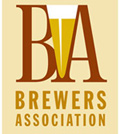
The BA, which represents the business interests of craft brewers, was able to land an Op-Ed piece in the St. Louis Post-Dispatch on Wednesday headlined “Craft or Crafty? Consumers deserve to know the truth.” The BA marketing team followed up with a release to its media list attempting to generate stories that will underscore the difference between products owned or assisted by larger breweries and those made by its constituents, knocking “crafty” beers that fall outside BA’s own definition of “craft.”
“We call for transparency in brand ownership and for information to be clearly presented in a way that allows beer drinkers to make an informed choice about who brewed the beer they are drinking,” noted the statement.
According to a chart included in the release, “crafty” products include higher-end offerings like Blue Moon (owned by Miller/Coors) and Shock Top (owned by Anheuser Busch/InBev) as well as brands like Goose Island (Bud-owned as of last year), and Craft Brew Alliance (CBA) brands Widmer, Kona and Red Hook (partially owned by Bud). Taken together, in 2011 those brands sold about 3.7 million barrels of beer — nearly the equivalent of the 4 million brewed by top three craft brewers Boston Beer Co., Sierra Nevada and New Belgium. And that’s not even counting other large, popular non-craft breweries like Yuengling, Dixie, and Straub.
“I’d say what we’re doing is pointing a bright light on this part of the beer industry by showing who’s behind some of the beers that are essentially being marketed as small brewer beers,” said Paul Gatza, the director of the Brewers Association.

A November Fortune Magazine story on the phenomenon of large global breweries offering craft-like products helped jump-start the campaign. Gatza said that the BA’s membership have been concerned about “crafty” offerings for a long time, but the image of large brewers dressing in the monkish, hop-scented robes and Carhartt overalls of the craft brewer gave the association some leverage in an argument that it has long made to consumers and the media.
“There’s a bit of media awareness that seems to be going on now,” Gatza said. “We’ve been telling [the media] about Shocktop and Blue Moon for a while.”
A good outcome for the BA membership, according to Gatza, would be for more stories in local papers pointing out the BA’s own definition of craft beer — and an increase in consumer awareness that could follow concerning “crafty” offerings.
Some of the highest profile members of the BA, however, don’t seem as concerned about the notion; recently, while speaking on a panel at the Brewbound Craft Beer Session, New Belgium CEO Kim Jordan, Dale Katechis of Oskar Blues Brewery and Tony Magee of Lagunitas offered more sanguine opinions about the growth of products like Shock Top — especially at a time when craft brewers are having trouble keeping up with the pace of consumer demand for better beer.
“Some of the beersÔǪ are the gateway, and now I can talk to you because you are at least thinking outside of the box a little bit,” Katechis said.
Gatza agreed the products might serve as “gateways” to craft, but added “the issue is how they are presented.”
Craft Brew Alliance spokesman Brady Walen said he understood the reasoning behind the campaign, which in some respects doubles down on the notion of the craft brewers themselves as the industry’s greatest asset.
“The BA is merely doing their job in representing the interest of their membership,” he said, adding that the campaign appeared to be formulating around “the collective example of Goose Island, Blue Moon, Shock Top and the CBA brands lumped together.”
Nevertheless, he added, “We’re in a different position. Anheuser-Busch has an invested stake in CBA, but it’s not 100 percent ownership. We’re not Shock Top. We’re being thrown into the mix with other companies that are 100 percent owned and operated by other players in the market.”
